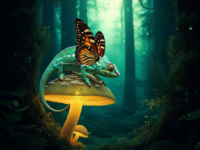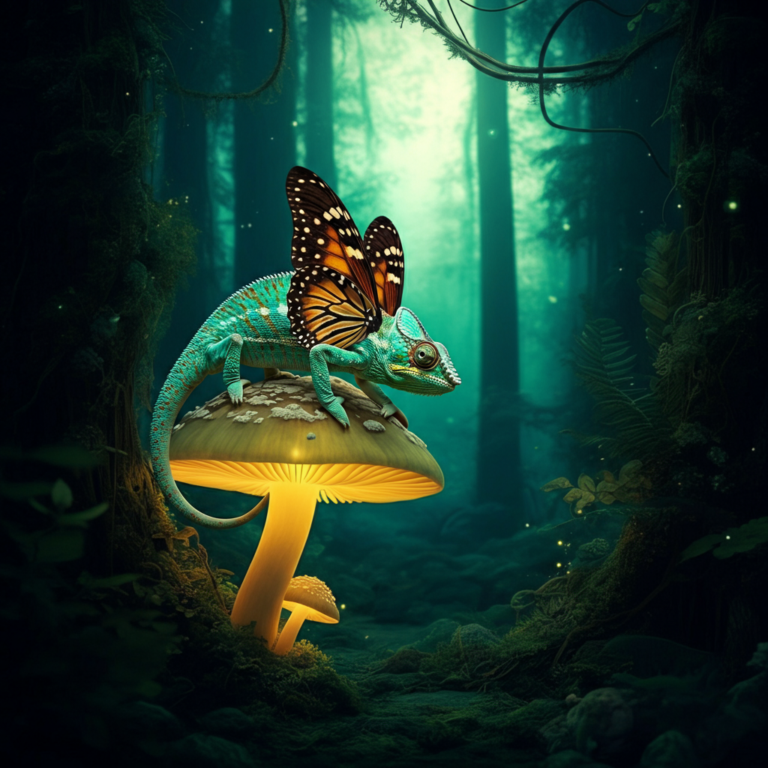Nature is full of surprises. Among its creations, animals often display adaptations that seem straight out of a science fiction movie. From the microscopic to the massive, creatures across the globe wield evolutionary tricks that help them survive in their unique habitats. These adaptations can be astonishing, puzzling, or downright bizarre—but they all serve a purpose.
This blog unpacks some of the most peculiar animal adaptations you may not have heard of. By the end of this article, you’ll marvel at the ingenuity of evolution and may even be inspired to see some of these remarkable creatures in person!
Why Do Animals Have Weird Adaptations?
Every strange adaptation has a story behind it—a solution crafted by evolution to help a species navigate its environment. Over countless generations, mutations and natural selection have shaped these extraordinary traits to ensure survival, improve mobility, help attract mates, or ward off predators.
But here’s the key principle to keep in mind about evolution: adaptations evolve because they work—no matter how weird they may seem to us. Below we explore some of the world’s most bizarre examples.
The World’s Strangest Animal Adaptations
1. The Exploding Ants of Borneo
Ever heard of an animal weaponizing its own body? Meet the Colobopsis explodens, also known as the exploding ant. When under threat, these ants exhibit a unique defense mechanism where they rupture their own bodies to release a toxic glue-like substance. This sticky secretion entangles and repels predators, sacrificing one ant for the good of the colony.
While this grim tactic may seem extreme, the adaptation showcases how far evolution will go to protect a highly social species from larger adversaries.
2. The “Immortal” Jellyfish (Turritopsis dohrnii)
Imagine having the ability to cheat death—again and again. The Turritopsis dohrnii, often referred to as the immortal jellyfish, possesses an extraordinary ability to revert its cells back to an earlier stage in its life cycle. This “biological reset” allows it to avoid natural aging under the right conditions, effectively granting it an infinite lifespan.
While not every individual jellyfish survives forever, this unique adaptation has made scientists curious about the potential for anti-aging research.
3. The Hairy Frog’s Claw Weapon
Nicknamed the “Wolverine Frog,” Trichobatrachus robustus takes self-defense to the next level. When threatened, this amphibian from Central Africa breaks its own toe bones, pushing them through the skin to create makeshift claws.
This adaptation turns the usually docile creature into something far more formidable. But why would evolution favor such a painful defense mechanism? Likely because the stakes of survival outweigh the risk of injury in its predator-filled habitat.
4. The Hibernating Lungfish
When drought strikes, most aquatic creatures suffer—but not the African lungfish. This amphibious fish has an incredible ability to survive without water by burrowing in mud and entering a state known as estivation.
During estivation, the lungfish’s metabolism slows dramatically, allowing it to endure harsh conditions for months—even years. When the rains return, they reactivate themselves, coming back to life and re-entering the water.
5. The Pistol Shrimp’s Sonic Boom
Don’t underestimate the tiny pistol shrimp. This small marine creature is armed with a claw capable of snapping at tremendous speeds, creating one of the loudest sounds in the ocean.
The “snap” creates a bubble that collapses almost instantly, generating enough heat and pressure to stun or kill prey. This adaptation not only helps it hunt effectively but also protects the shrimp from larger predators.
6. The Glass Frog’s Transparent Skin
Native to Central and South America, glass frogs have translucent skin that allows you to see their internal organs. But why lose pigmentation and become partially see-through?
This adaptation serves as a unique camouflage strategy. Nestled on green leaves in the rainforest, glass frogs virtually disappear, protecting them from potential predators.
7. The Shrinking Salamanders
Salamanders of the genus Desmognathus are capable of shrinking their physical size when resources such as food and water are scarce. This is not merely a surface-level adaptation—these amphibians reduce the size of their skeletons to ensure survival.
This resourceful adaptation showcases nature’s remarkable ability to find creative solutions to extreme challenges.
8. The Mimic Octopus
The mimic octopus (Thaumoctopus mimics) has a talent that could land it a spot on Hollywood film sets. This master of disguise can transform its shape, color, and movement to imitate other sea creatures such as lionfish, sea snakes, and flatfish.
Why mimic other species? This adaptation allows the octopus to learn and mimic traits of venomous creatures and deter predators. Its versatility in mimicry is among the most complex camouflage strategies documented in marine life.
Why Are These Adaptations Important?
These bizarre traits are not just quirky facts—they carry important implications for our understanding of biology and evolution. For one, they emphasize the diversity of life across different environments. Each adaptation is a tailored solution to challenges posed by predators, climate, and limited resources.
Furthermore, studying extreme biological traits can inspire innovation. For example, researchers are exploring the “immortal” jellyfish to better understand cellular regeneration, the snapping shrimp to study underwater acoustics, and lungfish estivation as a potential model for human medical science.
What We Can Learn from Strange Adaptations
Animals’ bizarre adaptations point to one enduring truth of nature—when faced with adversity, life finds a way. These examples remind us that survival is not just about size or speed. Instead, it’s about adaptability, resilience, and outsmarting challenges.
Business leaders, athletes, and creative thinkers alike can take inspiration from these unique traits, applying their lessons to persist and thrive in their respective environments.
Want More Strange Animal Facts?
If this list of bizarre animal adaptations left you curious for more, you’re not alone! Nature’s creativity has no limits, and there are countless weird and wonderful creatures waiting to be discovered. Stay tuned for our next deep dive into evolutionary oddities—or better yet, subscribe to our newsletter for regular updates straight to your inbox.





















0 Comments